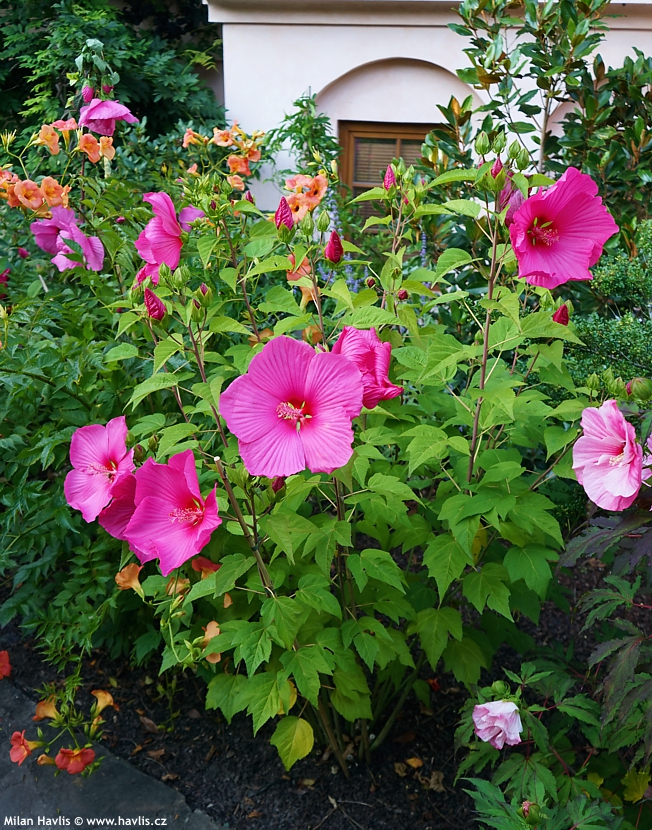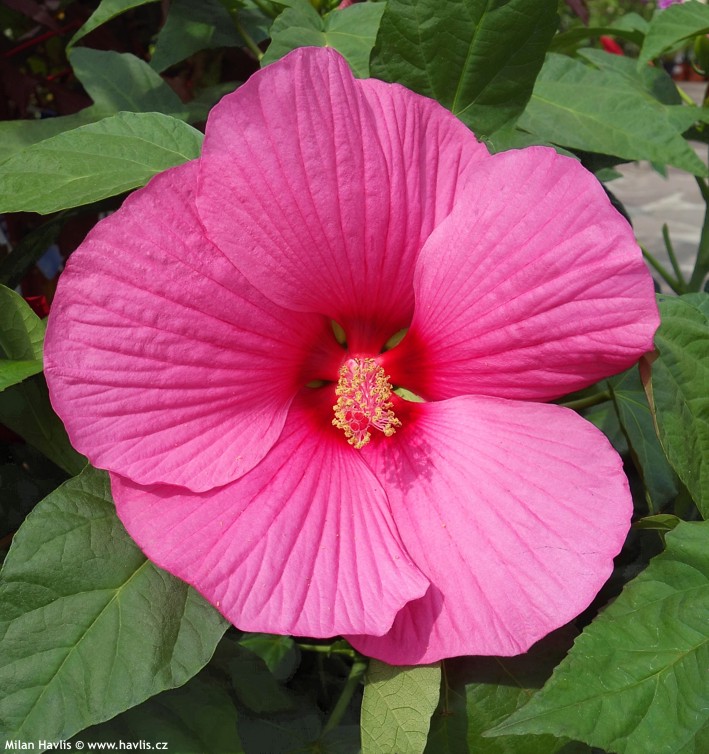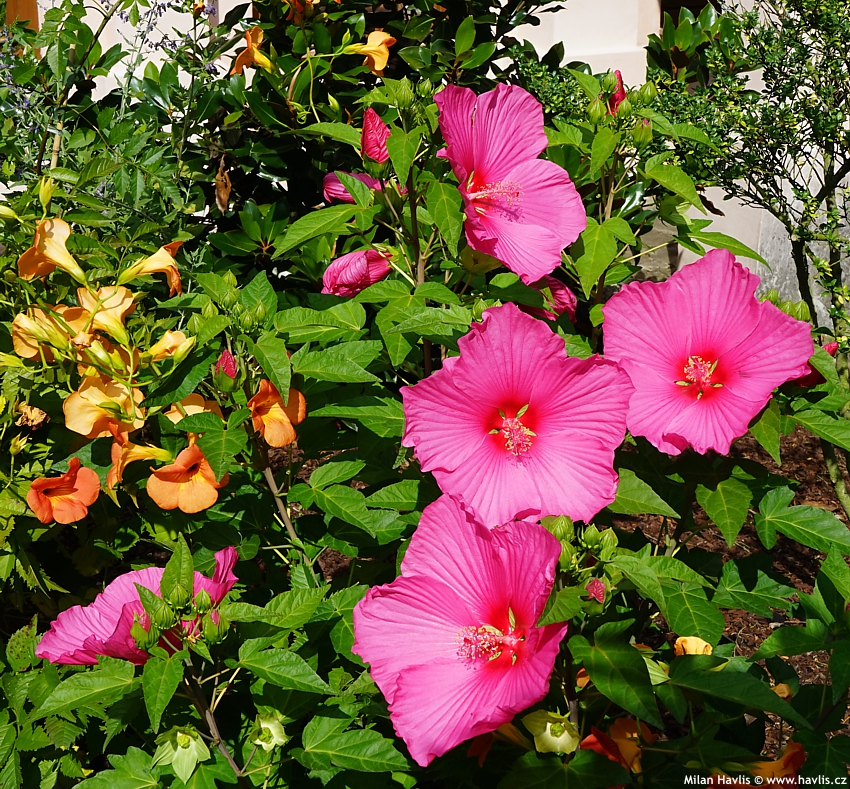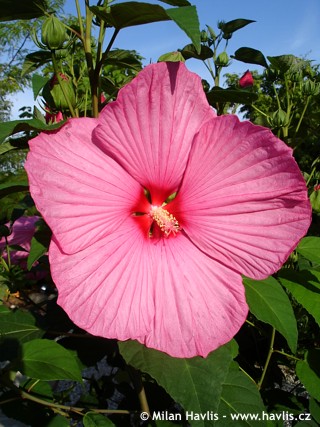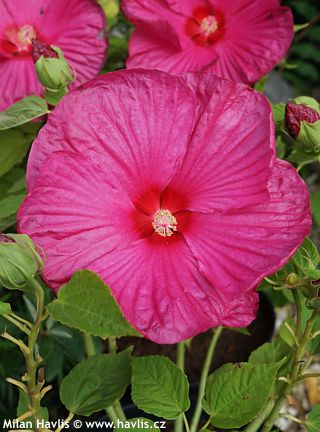Hibiscus moscheutos 'Extrehotpink' EXTREME HOT PINK swamp mallow, hardy hibiscus
Hibiscus
Swamp mallow and its hybrids have been sought after plants for the past few years now. They are perennials with sturdy stems that have large, tropically looking flowers. This variety was bred by Cornelis A.Oostveen from the Netherlands who specializes in large-flowered hardy hibiscus and has introduced some of the finest compact varieties such as Oak Red, Extreme Sparkle, and Extreme Magenta. Patent No. PP23889 was issued in 2013.
EXTREME HOT PINK is a hot addition to the Extreme series of swamp mallows. It produces striking, neon pink flowers 19-20 cm across. They are produced from August onwards, and depending on plant's age and fertilizing new flower buds can be formed till September or October. Deciduous leaves are deep green, ovate first, 3-lobed later (as in Oak Red bariety), and in autumn turn golden yellow with red veins. The plant forms a compact clump to about 80 cm tall and wide.
Swamp mallow is dependent on regular watering and feed supply. Use fertilizers with enough phosphorus for abundant flowering, or any other quick-release fertilizers where nitrogen is not predominant. Any fertilizing has to stop by end September. Still, nitrogen-based fertilizer is useful when the plants wakes up from dormancy in mid spring, but should not be used longer than 8 weeks. Hardy hibiscus emerges very late, sometimes as late as in late May.
For healthy growth and profuse flowering it needs a sunny location with a lot of moisture which can be achieved by good mulching. The soil has to be fertile and permeable, never let it dry out either in summer or during dry winters - its fleshy roots need some moisture also in winter. Hardy to min. -23°C (USDA zone 6). Cut back the plant only a few centimetres above ground level in spring.
Last update 13-08-2018


































